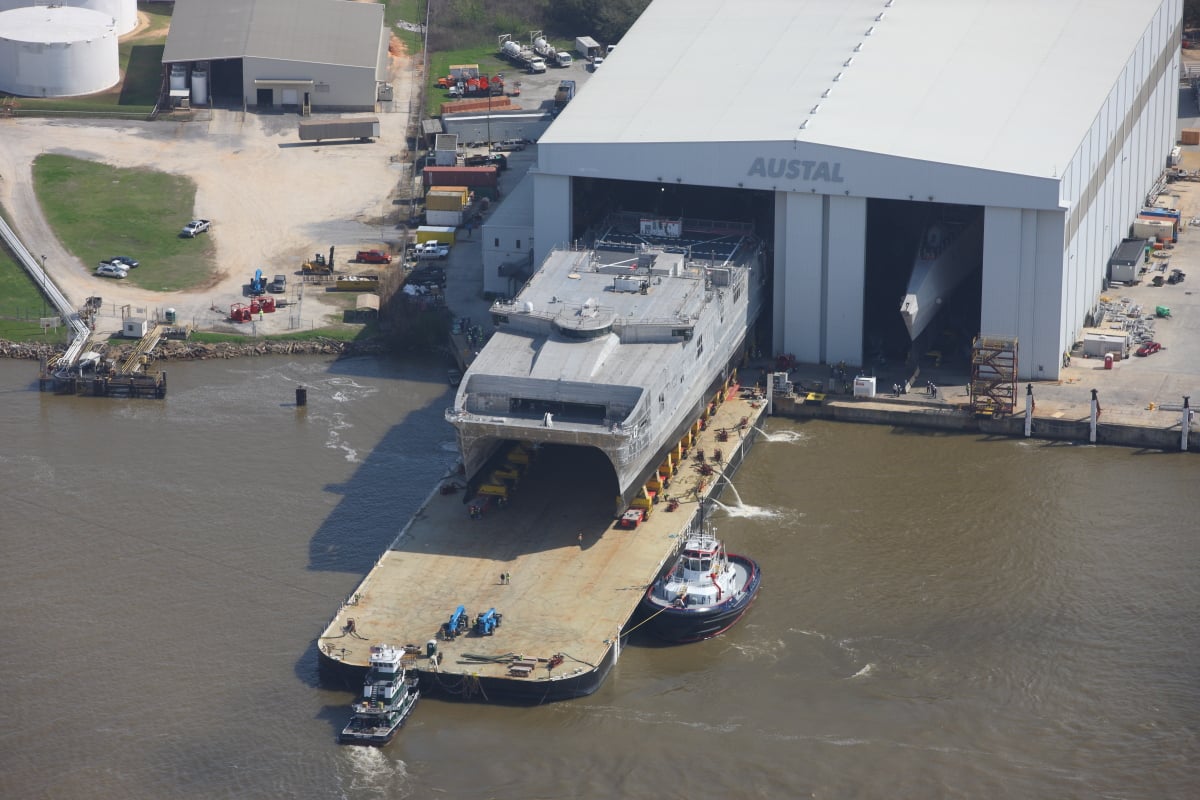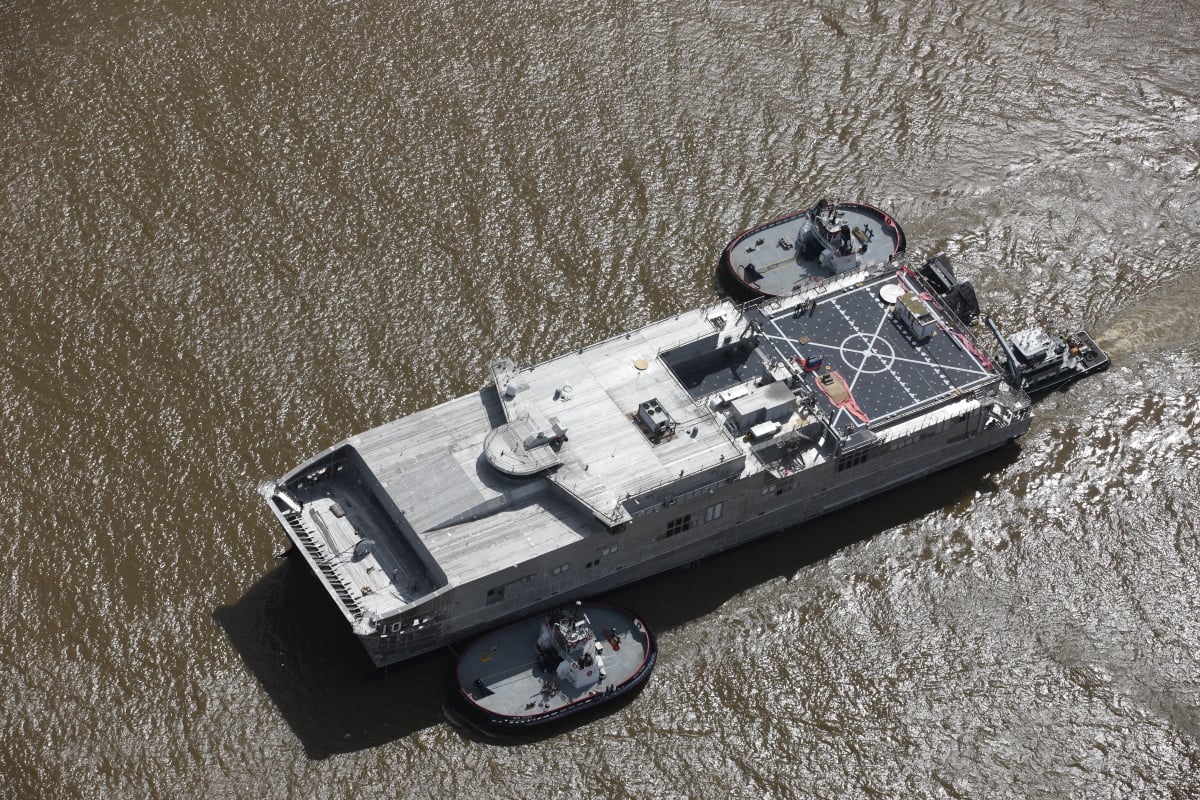
The Navy’s next expeditionary fast transport vessel, the future USNS Burlington (EPF-10), completed builders trials at the Austal USA shipyard in Mobile, Ala., and in the Gulf of Mexico.
During the week of trials, Austal tested ship systems such as fire protection equipment, according to a Naval Sea Systems Command (NAVSEA) news release. Burlington spent two days underway, testing communications and navigational systems, ship propulsion and maneuverability. Burlington conducted a series of high-speed turns to demonstrate its stability and agility, according to the release.
“Burlington performed very well and is well on the way towards her delivery as the next Expeditionary Fast Transport vessel to the Navy,” Capt. Scot Searles, the Strategic and Theater Sealift program manager within the Program Executive Office for Ships, said in the statement. “The testing results achieved this week are a testament to the combined efforts of industry and Navy.”
This recent contractor testing comes after Burlington was christened in late February and launched on March 1.
The next step for Burlington will be acceptance trials, scheduled to begin later this month, where the Navy’s Board of Inspection and Survey (INSURV) will inspect the ship and certify Burlington as being ready for delivery to the Navy.

For Austal, Burlington’s progress means the shipbuilder is nearing the end of building the EPF in the U.S. The final two fast transports contracted, the future USNS Puerto Rico (T-EPF-11) and USNS Newport (T-EPF-12), are under construction as part of a $431-million contract. Total orders for the class are worth roughly $2.7 billion, according to the company’s financial statements.
Austal expects to deliver to the Navy the last fast transport in 2020, unless a potential EPF-13 is awarded. Currently, funding for a 13th is being considered by congressional appropriators, Michelle Bowden, an Austal spokeswoman, told USNI News.
However, Austal’s Australian-based shipyard is using the EPF design as the basis for what calls a High Speed Support Vessel, currently being built for the Royal Navy of Oman. Austal is creating this class of ship for export markets, according to Austal’s financial reports.
The Navy has been experimenting with expanding uses for the EPF. Last month, during the multinational Baltic Operations (BALTOPS) exercise, USNS Carson City (T-EPF-7) conducted high-latitude operations and mine countermeasures missions – both firsts for the class. The Navy has also considered using the EPF as an afloat command center or to host unmanned platforms for intelligence, surveillance and reconnaissance (ISR) missions.





